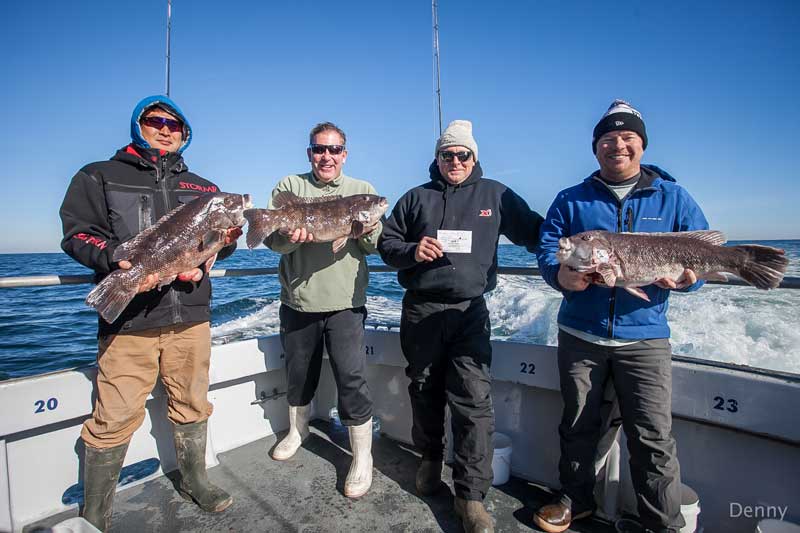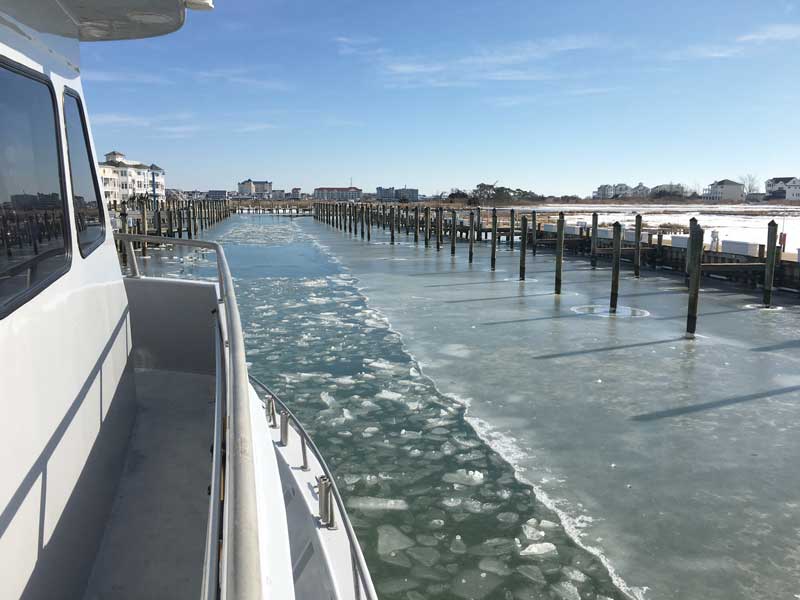With the rockfish season closing December 20 in Maryland, if you want a winter fishing escape to go fishing in the salt chunk you still may catch winter tog in Maryland and Delaware. Since Maryland and Delaware are in the same management group their regulations should be the same, but I suggest you check your state regulations before heading out. Fishing regulations are like the weather, able to change without notice.

I don’t suggest trailering your boat to Indian River, Ocean City, or Lewes because winter seas are usually big and nasty. As such they can make a trip on any boat capable of going on a trailer just a tad uncomfortable. When the wind and waves really get nasty, small boats will put the crew in grave danger.
This leaves charter and head boats the logical choice. These boats run all winter from Lewes, Indian River, and Ocean City. The captains know their secret spots and can put you on tog without a lot of running around. Just go to your search engine and type in the place you wish to fish from, followed by head and charter boats. Contact the captains, work out a date, with at least one fall back date and you are all set. Charter boats cost more, but only carry six anglers. Head boats are less expensive, but you will have to share the deck with more folks.
Finding tog and catching tog are entirely separate things. The captain can put you on top of great tog habitat, but getting them to take your bait and then getting a hook in their mouths is not easy.
First of all, I believe in taking more than one type of bait. Green crab and white leggers are on the top of the list with shrimp, clam, conch, and fiddler crabs following close behind. I once fished in a boat when we had green crab and caught nothing while the boat next to us bailed tog while using fiddlers. Such are the ways of the tog.
Almost every tog I have caught has been on bait, until last year when I caught six in a row on a thin Stingsilver. We were fishing the Washingtonian wreck out of Indian River, and I had been catching black sea bass on the lure when all of a sudden I caught six tog one after the other. Four were small, but two were over 16 inches; and I had one on that I couldn’t turn. All were hooked in the cheek, none on the mouth. Now I don’t recommend leaving the bait on shore, but if you see that black sea bass are eating sand eels, you might want to give a Stingsilver a try.

Tog are one of the few fish (triggerfish are another) for which I don’t use non-offset circle hooks when fishing with bait. Tog crush the bait, spit out the shell, and swallow the meat in the blink of an eye. Since the hook usually goes with the shell, it never gets in the fish’s mouth, so circle hooks are not going to work.
I use J hooks, Virginia beak style, for all my tog rigs. My standard rig has one Virginia beak hook on a two-foot piece of 50-pound Hi Seas fishing line. A perfection loop goes on one end, a double surgeon’s loop goes on the other, and another surgeon’s loop is placed between the ends to hold the hook. You can either tie the hook inside the middle loop or put it on by pulling the loop through the hook’s eye.
If you go on a head boat, you will see all sorts of tog rigs. I have seen two hooks placed directly opposite one another just above the sinker. The hooks are placed in either end of a green crab or both ends of a large shrimp.
Some folks will use a standard top-bottom rig, and that’s okay. I stick with one hook for two reasons. One, there is not as much tackle to get stuck in the wreck or other bottom structure. Two, when I lose a rig, I am only out one hook, not two. Saying this, I am well aware that when you miss a tog, in all probability your bait has gone missing as well. If you have two hooks, there is another piece of bait already down there, so you don’t have to crank up and rebait.
However you want to go, I think you will find tog fishing in the winter a good exercise, and tog make wonderful meals.
For ideas on a warm winter fishing escape, check out Eric Burnley's article on the Tropic Star Lodge in Panama.
By Eric Burnley